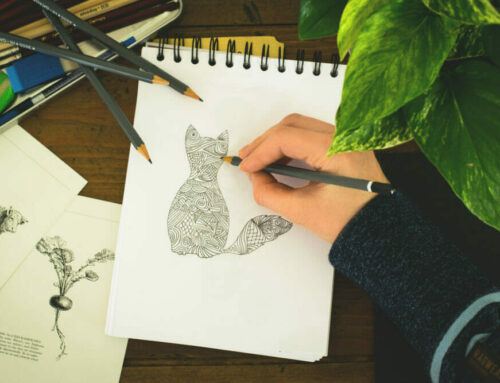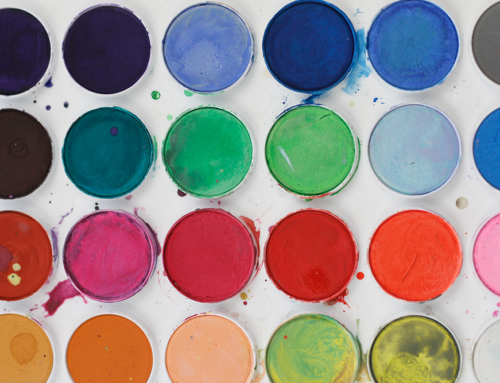I frequently get asked about what it is like to be an art therapist by people considering entering the field. Here are a few the most commonly asked questions.
What made you enter the field of Art Therapy?
I was a graphic designer as an undergraduate and after working in the design field for a few years I wanted to do something that felt more meaningful to me. I had always been interested in psychology and art had been a life long hobby. I stumbled on the field of art therapy in the quest for, “what do I want to do with my life?” It seemed to merge both my interests and I went back to graduate school.
Do patients generally try other forms of therapy before turning to art therapy?
Sometimes I see people who have done traditional talk therapy and felt “stuck,” so they want to try an alternative way of working through things. Other times I get people who are artistically minding or not as verbal and come to art therapy straight away.
Is art therapy something many people are aware of?
More and more, I hope! I definitely think more people have heard of art therapy now than when I first entered the field, but there are still a lot of people who aren’t familiar with it. This has been a challenge in the field for sure, especially in terms of institutions and insurance companies viewing art therapy as a legitimate mental health profession.
What emotional and behavioural struggles have you helped your patients with?
I work a lot with people who are in recovery or who have a family member that struggled with addiction. I also work with people who have had some kind of trauma. Both these issues lead to a lot of anxiety and relationship challenges, which tend to be the most frequent symptoms I see.
When/If art therapy is ever unsuccessful, is this due to individual needs or are there specific illness that art therapy just cannot help?
Art therapy isn’t for everyone, but if a person is open to it, usually they can benefit from it. Certain logistical things may prevent it from being useful to some populations such as if there is a physical disability that prevents someone from using art materials (though often there are ways to be creative with this.)
How does a patient know it can work for them?
They have to try it! In my private practice I work with fairly high functioning people and they sometimes have resistance to trying art therapy (I do talk therapy as well.) Once they get over the initial resistance and self-consciousness, people usually like it. I find a lot of people make art and talk at the same time, which makes it a way to feel more relaxed during a session.
What does a typical art therapy session look like?
I am pretty open and don’t provide a lot of structure unless someone really needs/wants it. I have found most people create what they need to in a particular moment. I have an assortment of materials out on a table and most of the time people come in and just pick up whatever they are attracted to on a particular day. In the beginning I might suggest something as a starting point, such as a mandala, but once people are comfortable with the art making process, they usually choose what they want to do. This is just what has worked best for me, certainly some other art therapists might offer more specific directives. It depends on the needs of a particular population.
As an aspiring art therapist, what advice would you give me?
It can be a challenging field to be in – not great pay, constantly needing to explain what you do, but it is very rewarding and if you are passionate about it, you can find a way to make it work. It’s worked best for me to have multiple part-time jobs, instead of a full time job, as it offers more variety and leads to less burn out. I used to work at a residential drug treatment facility part time where all the work was group art therapy, which was a nice balance to my private practice where it is all individual work. The longer you are in the field, the better it gets as you have more options and control over what you do.






